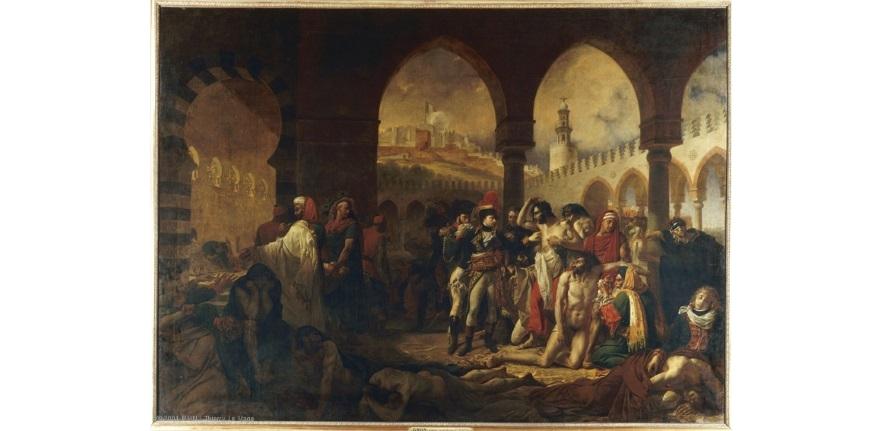
By the nineteenth century plague had pretty much disappeared from Europe, and was increasingly conceptualized as a tropical disease by the West. Napoleon’s soldiers encountered plague while on campaign in the Levant, and plague was a focus of the growing late nineteenth-century field of tropical medicine. In visualizations of the plague in this period, the disease got mapped onto exotic places and foreign bodies, becoming a disease of the colonized “other.” The advent of photography in the nineteenth century also allowed medical workers to document the ravages of the plague in Europe’s colonial holdings, and the Third Plague Pandemic (1894-1959) was the first epidemic to be photographed thoroughly.
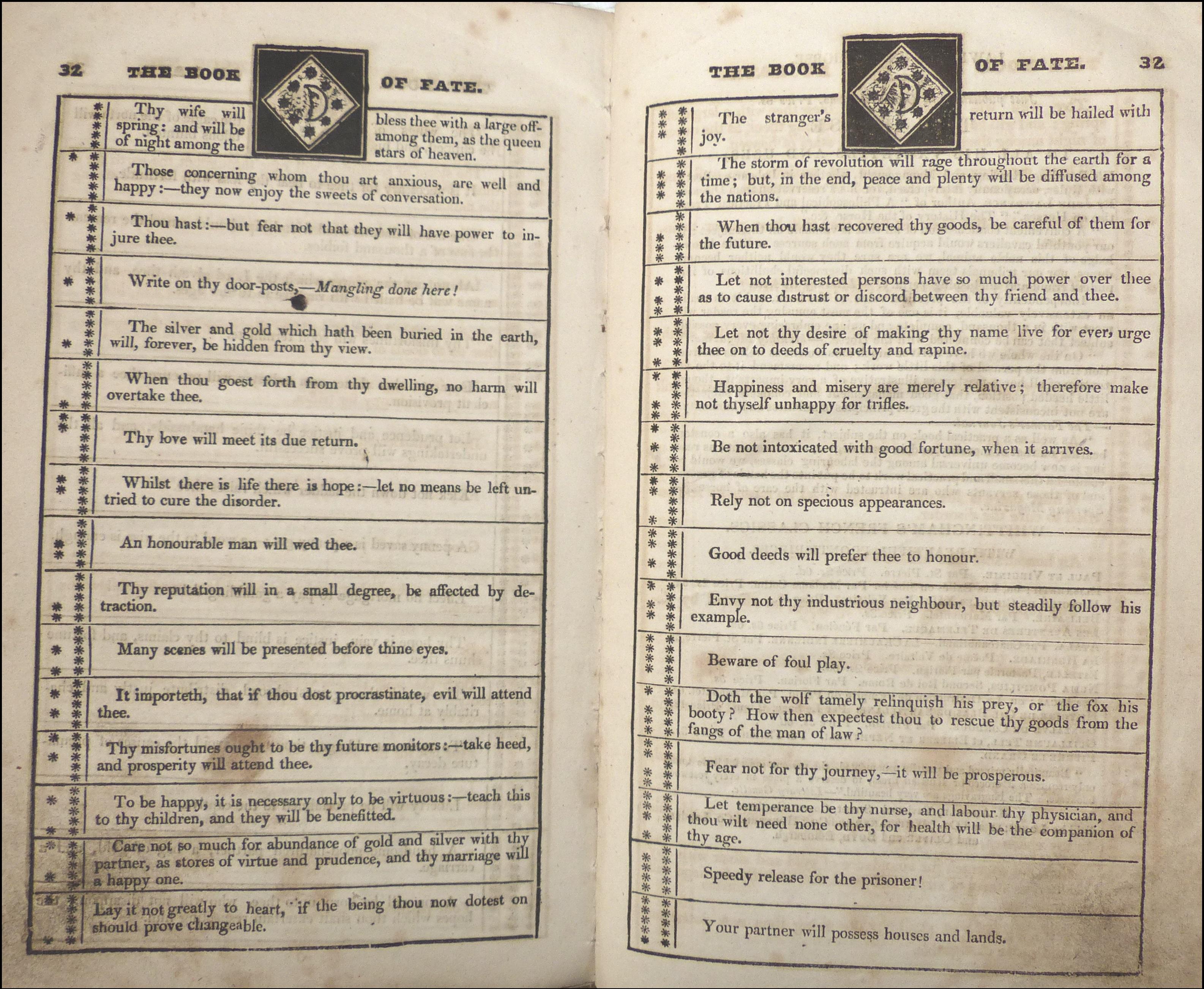
Napoleon’s campaign in Egypt and Syria (1798-1801), part of the larger Napoleonic wars, was an early example of Europe’s growing interest in imperialism and orientalism. The campaign included many scientists and scholars, and the French army brought many treasures of Egypt and the Levant back to Europe including the Rosetta Stone and the Egyptian wisdom text “The Book of Fate” seen here in an 1801 English edition. After sacking the port city of Jaffa in 1799 Napoleon’s army was terrorized by an outbreak of plague. Antoine-Jean Gros painted this iconic painting, shown above, of a Christ-like Napoleon touching the buboe of an infected soldier among the exotic setting of a Syrian mosque, which was a triumph at the Salon and now hangs in the Louvre. It is considered by some to be the first painting of the nineteenth century art movement Orientalism.
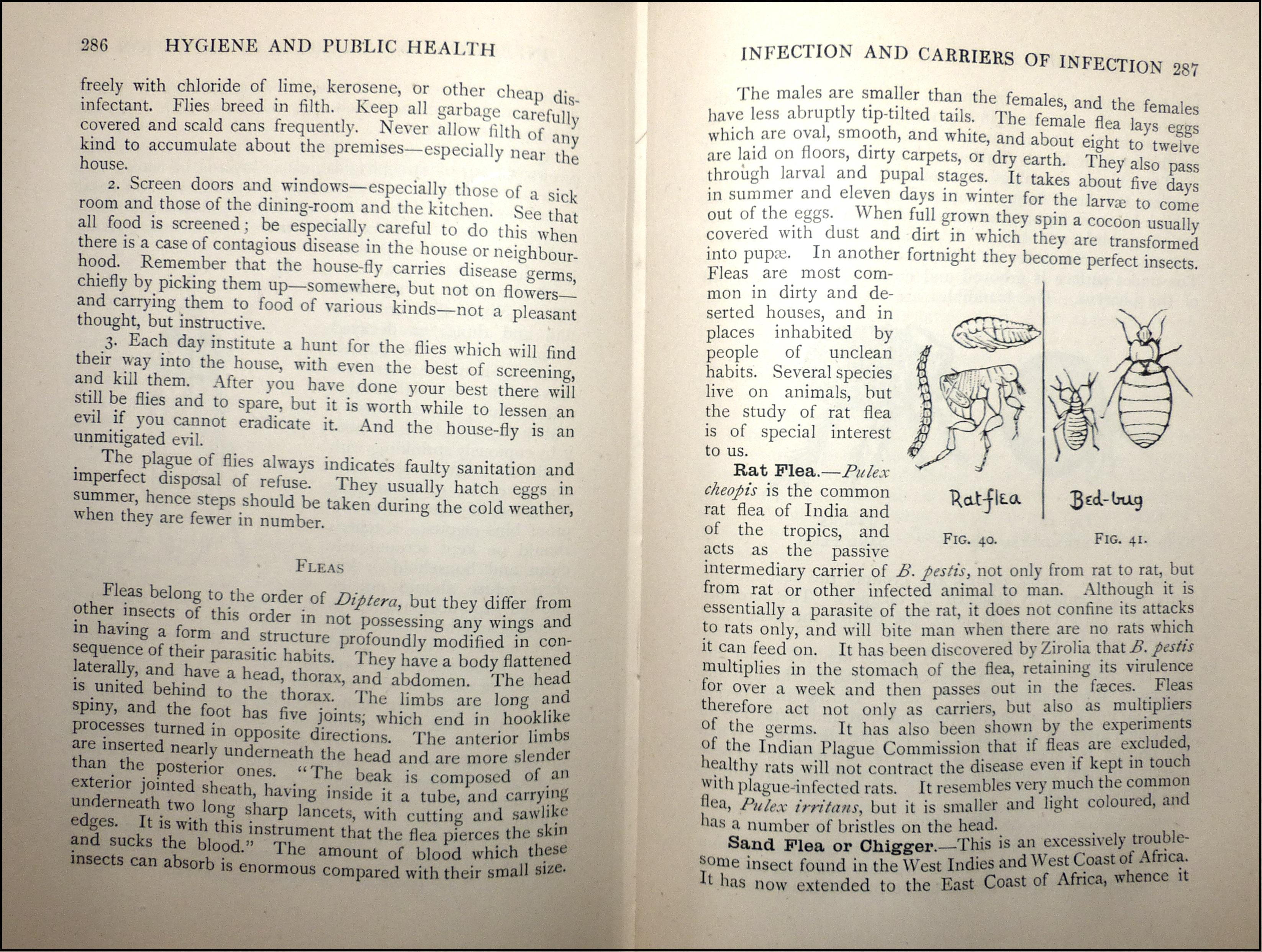
This popular manual on hygiene, public health and tropical disease mentions the plague in India in its extensive section on insects. The plague at this point is known to be carried by fleas that live on rats, a discovery made by Professor Masanori Ogata in 1897, and the author includes an attractive illustration of the rat-flea along with the bed bug.
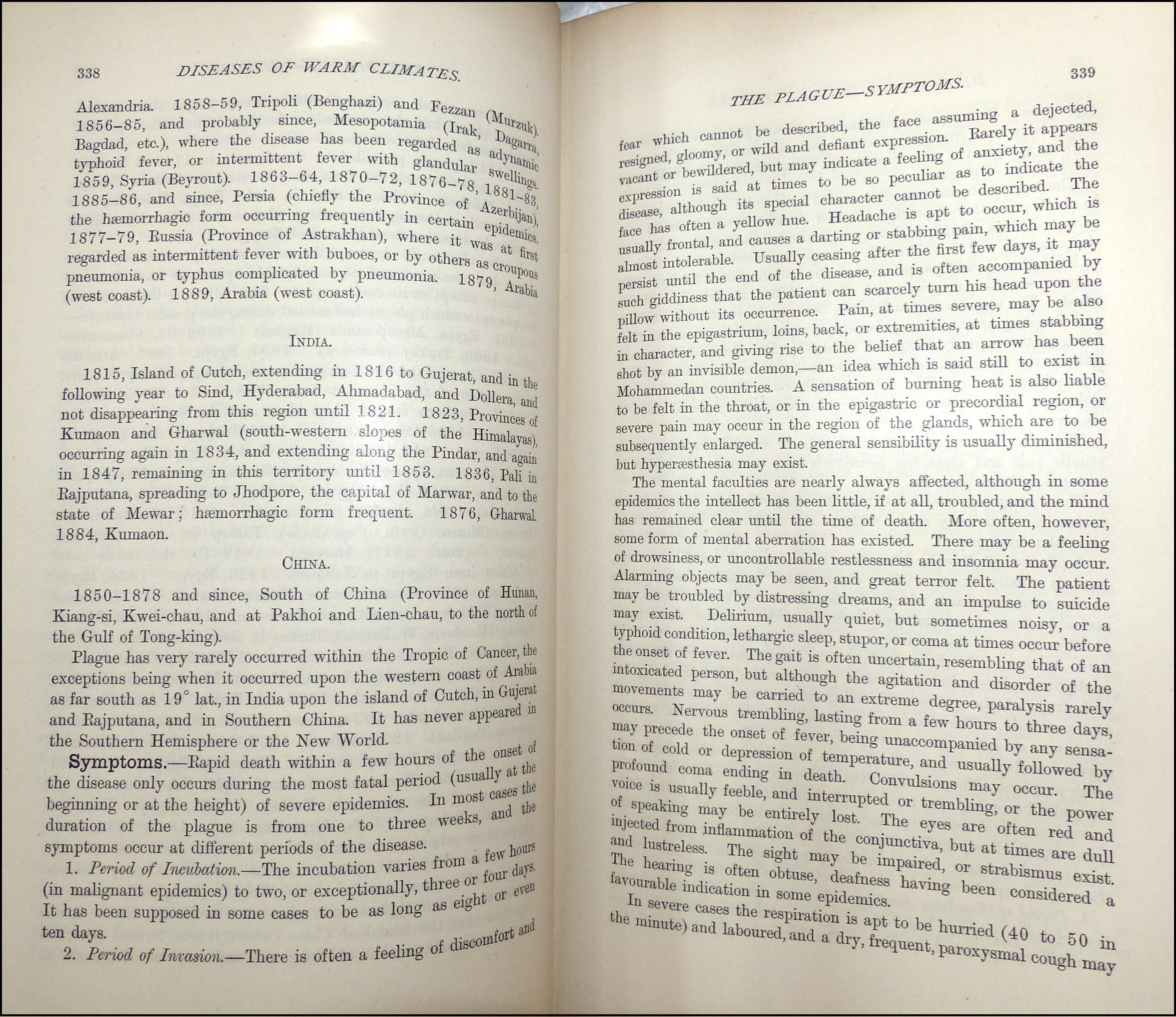
Andrew Davidson’s large medical tract on tropical disease includes a section devoted to the plague in the “warm climates” outside of Europe. Although he includes the earlier ravages of the plague in his section on the history of the disease, in the pages open to here one can see his focus on the plague in European colonial holdings and interests like India, Hong Kong and China.
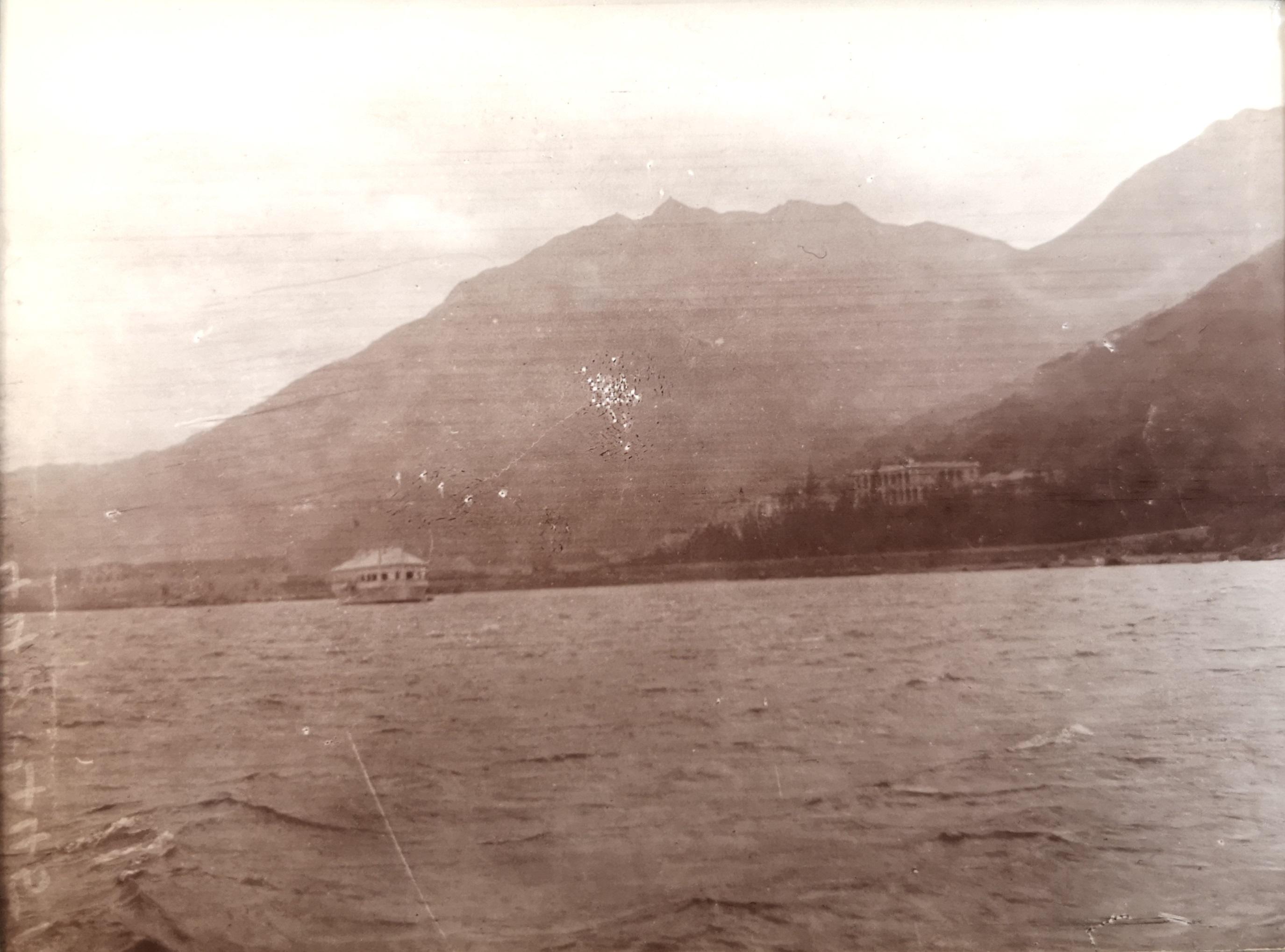
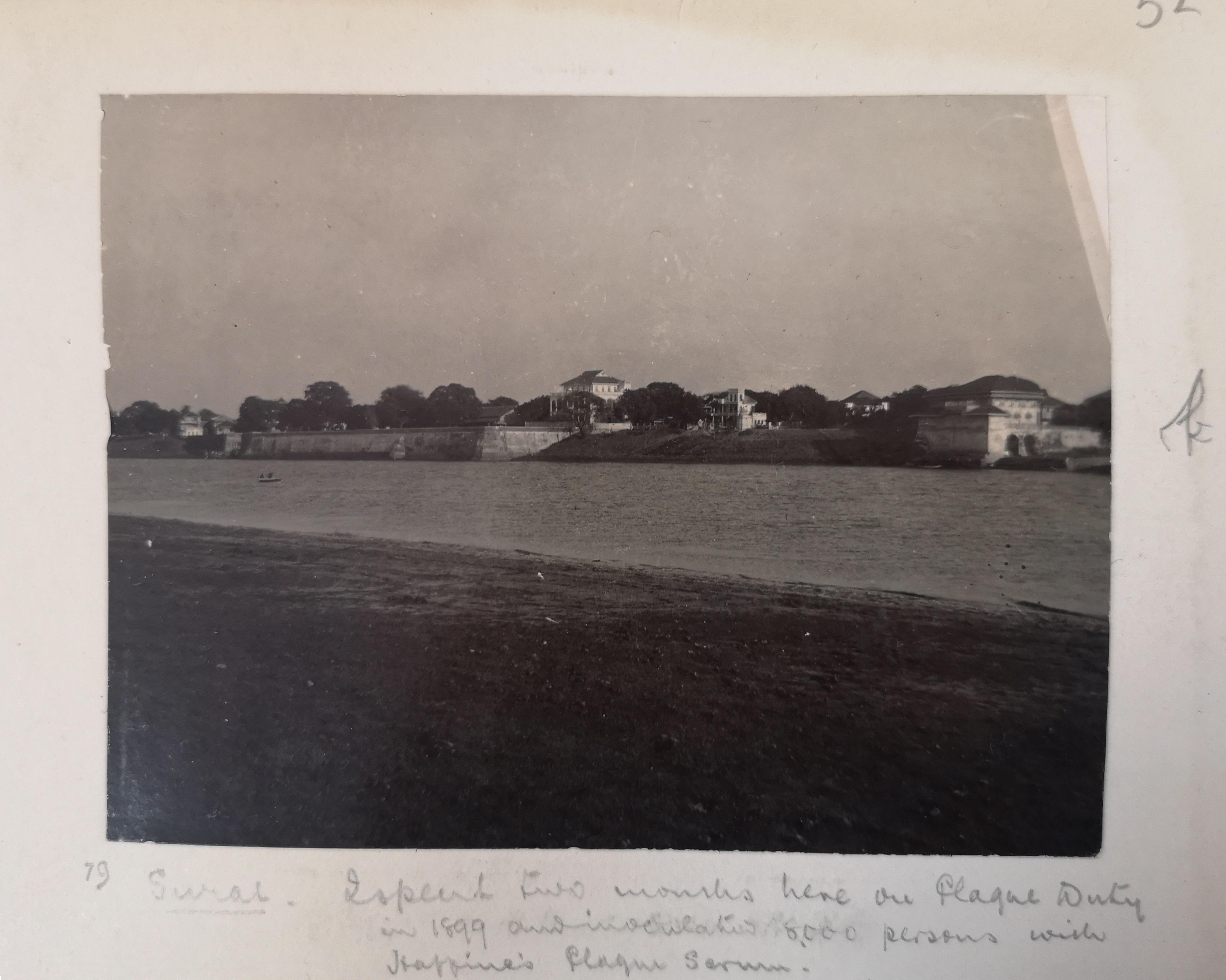
Cambridge University Library
Medical officers who were sent to the tropics to help contain outbreaks of plague and other diseases were interested in the cultures, peoples and scenery that surrounded them. They took photographs and made scrapbooks of their experiences in the tropics and included mentions of their time treating plague along with their anthropological interest in foreign cultures and cities. The two examples here, from larger scrapbooks made by medical officers in India and Hong Kong, are photographs of plague hospitals where they worked within the larger foreign and exotic setting of the tropics.
